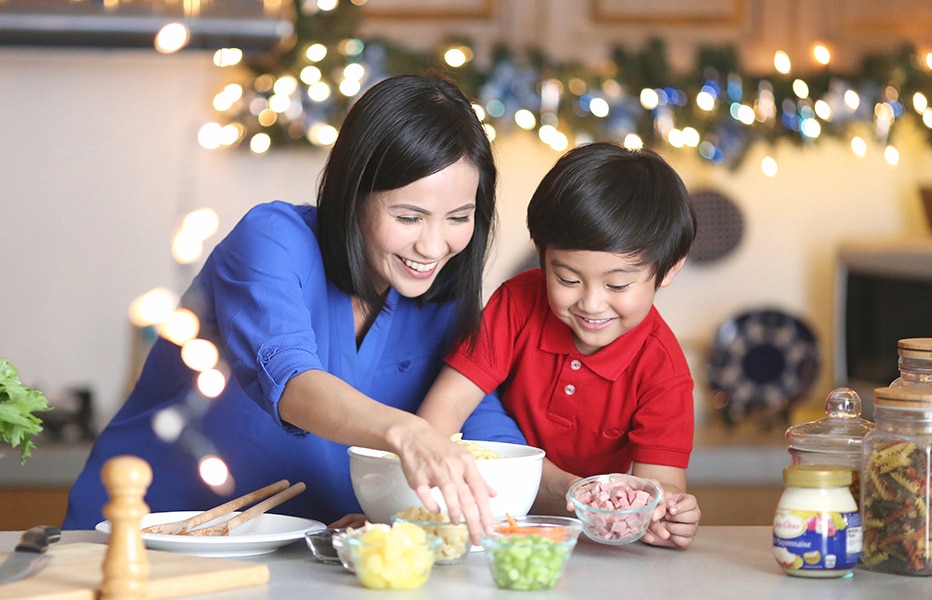How to Repair and Avoid Parent-Child Conflict Without Skipping the Issue
Share to facebook Opens in new window
As parents, you try and forge strong bonds with your children early on. For the most part, it's easiest to connect with kids, toddlers, and even infants. But as they age, any close relationships can become strained over time. It happens when children become more influenced by peers or the media or assert their independence. When this happens, parent-child conflict becomes more common.
Disagreements can start small with your child wanting to spend less time with the family and more with friends. They become guarded and are no longer open to sharing daily experiences or their feelings. The distance that develops causes even more friction if you manage it incorrectly. Avoiding conflicts must become a primary concern.
The question now is, how does a parent navigate this tricky phase?
It is human nature to want to push back. And to demand answers while expecting our offspring to respond to our parental authority. Rather than respond with anger, here are several ways to help you and your family get past these issues.
Breaking Down the 3 Types of Conflict

You must understand that a parent-child conflict is normal in family dynamics. However, when the disagreement remains unresolved and worsens after some time, stress builds, straining the relationship further. Having open communication lines is necessary. Before you can even learn how to prevent a parent-child conflict, you must first distinguish the type of conflict you are dealing with.
Inevitable conflicts
The moment your child was born, you, like other parents, have sworn a silent oath to always be there for them. The reality, unfortunately, isn’t as simple. You may be preoccupied with other priorities, such as work. You might overlook verbal and non-verbal cues. You may become impatient and overreact, causing your children to feel disconnected and misunderstood.
Boundary conflicts
You were young once, so you know what it is like for a parent or guardian to set limitations. Limits are crucial for creating the structure that kids need. However, these boundaries can cause tension between parents and children. If handled indelicately, it can cause further emotional detachment. The key to keeping communication lines open during this time is to emphasize with your child’s needs and wants.
In other words, learn a bit of compromise. Let’s say for example he wants to go out and play. Rather than just saying “NO” outright, consider compromising by enforcing a task they must do first. For example: “I know you really want to play outside but before you do, I need you to finish your homework first.”
Allow kids to enjoy without the threat of punishment or overindulgence. Provide opportunities for learning and a means for them to move past their emotional discomfort. The important thing is to let the child go through their emotions and that we understand how it feels when they do not get what they want. The goal is to help them learn how to regulate emotions better.
Intense conflicts
When we get into shouting matches, engage in threats, name-calling, and let our emotions overwhelm us, we create distressing environments. These scenarios result in intense emotional distress. We lose connection, causing them to feel confusion and shame. Intense conflicts often occur because a parent or both parents have unresolved issues from childhood.
Repairing Parent-Children Relationships After a Conflict

Resolving disagreements, no matter how big or small, is crucial, especially when fostering a caring and loving home environment for our children. Here are three steps we suggest you include in your parenting book.
Step 1
Emotions are a minefield that can be difficult to walk through safely. To give your children the space they need to express a full range of feelings, you must be comfortable with your own first.
Whenever you have emotions you find yourselves unable to express fully or express too often (sadness, anger, anxiety, or guilt), you inevitably pass these to your kids. Failing to find the source of your negative behavior can hinder you from making the needed efforts to repair any lost connection with your kids. Effective repair means focusing on your emotion and your kids'.
Step 2
As parents, it is your job to initiate the repair process. However, be mindful of timing. People process and reconnect at various levels – which you must respect. If you find yourself in conflict, the first step is to approach your kid and acknowledge the disagreement.
Initial attempts might be dismissed with stubbornness but don’t give up. Consider yourself the role model and always resist any urge to point fingers. It is your duty as parents to own up to your behavior before you try to correct theirs.
Acknowledge emotions instead of concealing or dismissing them. When you take the lead, your kids see this as permission to express theirs, too. Communicating you can express emotions also enforces that they can be managed.
Step 3
Take the time to listen to your kid’s thoughts and emotions. Encourage them to express their full range of emotions. But teach them to do it respectfully. Use interactions as a teaching opportunity. Create emotional connections by reflecting on events and experiences they share with you. The way we talk to our kids helps shape the way they can adapt and control impulses and their own emotions.
Main Practices for Preventing Parent-Child Conflict
Relationships, including the most bonded parents and children, will experience some turbulence now and then. Here are some of our tips.
#1 Prevention of parent-child conflict is achieved through acknowledging feelings and always having open communication. Think about offering the child an alternative so they won't end up fixating on their current misbehavior. For instance, if he has been shooting his Nerf gun at Fido, offer to have empty bottles or a drawn target for him to shoot instead.
#2 Have clear consequences for misconduct. Thus, if your child refuses to listen, make it clear that the privilege to use the toy will be taken away because of his inability to play with it responsibly. Additionally, create routines so that they know when they have free time to themselves after they have completed tasks set out for them. These could include helping feed the family pet, taking a shower, or finishing homework.
Avoiding parent-child conflict isn’t complicated. And no, it does not involve ruling with an iron fist but it does not mean you have to give in to all their whims either.
Ensure they grow up in a healthy and loving environment where they are allowed to go through their emotions and express them. Taking the time to interact with them continuously strengthens bonds. It includes listening to their stories and encouraging them to share their feelings. Simple activities like reading, playing in the yard or putting together a delicious snack such as the egg mayo sandwich with Lady’s Choice Sandwich Spread. Aim to nourish them physically, emotionally, and mentally.
National Library of Medicine. Parent–Child Conflict and Early Childhood Adjustment in Two-Parent Low-Income Families: Parallel Developmental Processes. [online] Available at https://www.ncbi.nlm.nih.gov/pmc/articles/PMC4523123/
Related Articles
- slide 1
- slide 2
- slide 3




